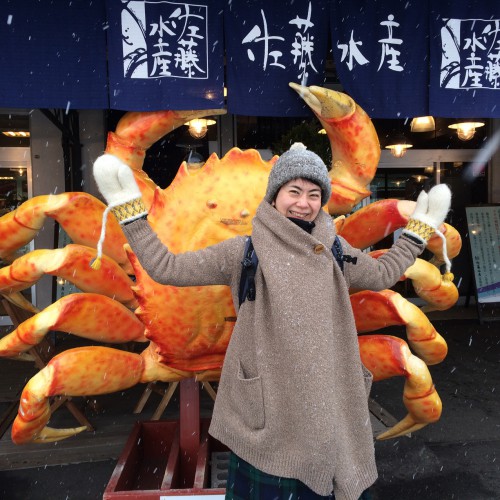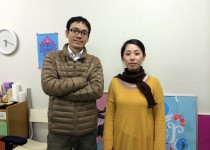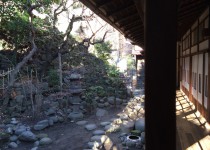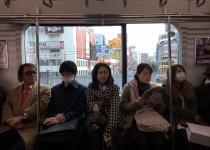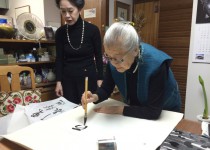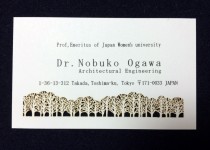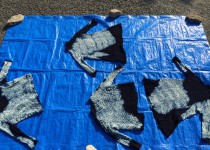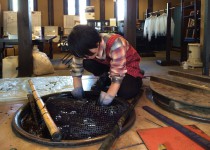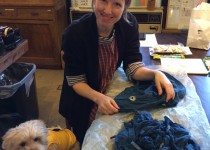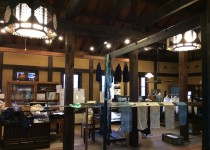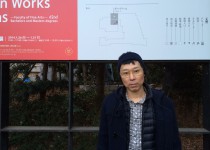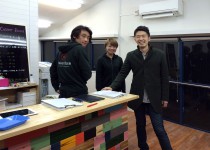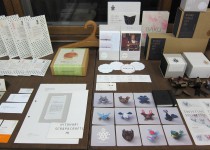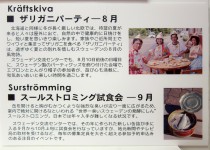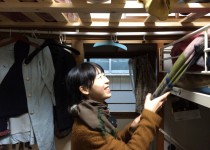Japan January 2014: Borrowed Sceneries. Enquiries of Identity and Appropriation.
In January/February 2014, Malin Pettersson Öberg carried out a second research trip to Japan with support from the Swedish Scholarship Foundation for Studies of Japanese Society (Japanstiftelsen). The trip was part of a self-initiated research project that examines Japanese identity in relation to Swedish and Western identity: Borrowed Sceneries. Enquiries of Identity and Appropriation. The project focuses on exploring and comparing the two cultures; their differences and similarities, how we describe and imagine each other and ”the other”, now and historically. It examines and looks at the effects of cultural translations, displacements, projections and other forms of exchange following globalization, on individual as well as collective levels. Central to the study is the idea of appropriation.
According to American writer and film-critic Donald Riche, in “A Lateral View: Essays on Culture and Style in Contemporary Japan” (1992), appropriation can be described as the borrowing and integration of a remote, ”foreign” cultural element or phenomena into one’s own culture. Traditionally it might be traced in Japanese garden art, where the term “shakkei” (borrowed scenery) signifies an extension or expansion of a garden by its view – for example towards a distant mountain. This act of reaching out and enhancing – appropriating – that which is most distant, by incorporating and making it part of nature or one’s own creation, recurs in contemporary Japanese culture, but also in many artistic methods of today. Malin Pettersson Öberg is interested in using the term as a metaphor or way of understanding various forms of exchanges, translations and interpretations, that take place between different countries or cultures. The aim of the project is not to produce a neutral or objective interpretation of Japan, but a highly personal reflection and description. Therefore, the focus is as much on Sweden, or on the various interrelations between Japan and Sweden/Scandinavia.
During Malin Pettersson Öberg’s first research trip to Japan in 2012, together with artist Hiroko Tsuchimoto, she was introduced by Hiroko’s family to the village of Sweden Hills near Sapporo, Hokkaido. In Sweden Hills, around 3.000 Japanese live in ”traditional Swedish” red houses fabricated in Leksand, Dalarna, near where Pettersson Öberg grew up. The two villages have a partnership since over thirty years. In Leksand there is a Japanese garden, and in Sweden Hills midsummer celebrations and crayfish parties are organised. In the project, Pettersson Öberg explores the remote ”image” of a place she knows well. How is Sweden ”pictured” in Japan, and what does it tell her about her own background and identity?
Pettersson Öberg approaches Japanese culture, identity and society well aware about her limitations to understand and interpret this place. She approaches it through encounters and interviews with Japanese artists and cultural workers, often with experience of living and working outside of Japan, and by visiting cultural sites and experiencing traditional crafts. She collects material through conversations, photography, film, writing and textile work, as well as by collecting prints and publications. The creative acts of appropriation; of recycling and re-contextualizing existing images and texts into new entities and stories, is an integral part of her method as an artist. One aim with the project is to explore how appropriation is, and has, been used in cultures/societies as well as in artistic practices. Pettersson Öberg examines and compares concepts of appropriation, projection and identification, and look at how these concepts manifest today and historically.
During her second research trip, she carried out interviews/conversations with sixteen Japanese artists and cultural workers in Sapporo, Sweden Hills and Tokyo. Some recurring topics of conversation was the weather and relationship to nature, how the nuclear accident in Fukushima in 2011 affected Japanese artists, and what the wrapping of fruit and candy or wearing of masks mean. Pettersson Öberg enquires how identity is shaped and changed in relation to places, people and cultures we encounter. What happens to our identity when we, in today’s global society, constantly are encouraged (or obliged) to move between geographical locations?

